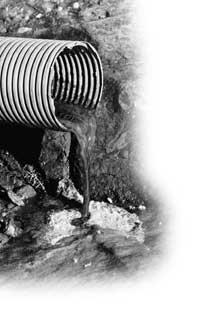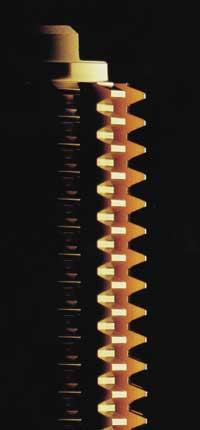Metallic coatings (II): waste and emissions
1999/05/01 Etxaide, Maider Iturria: Elhuyar aldizkaria
most appropriate treatments.
The most important waste derived from these processes are depleted baths and galvanic sludge from the purification of contaminated water from galvanic processes.
Bathrooms exhausted
The most common depleted baths are acids (pickled, activated, ..), basic (degreasing, ..), with hexavalent chromium (passivated, ..), cyanide (some degreases, ...).

Current galvanic processes allow process baths to be maintained for a long time. In some years, however, it can reach a very high impurity or other concentration, which forces to change the bath and reshape it. Consequently, the concentration of electrolytes is generated that must be disposed of as waste. The electrolyte contains useful metals inside it and whenever possible it must be resorted to its recovery. If it is not possible, it must be treated by physical-chemical methods, both in the company itself (if it has infrastructure for it) and abroad (delivering it to an external manager).
There are other depleted baths that differ from the previous ones in galvanic processes, foreign substances in the process (fats and oils used in degreasing, pickling and activated metals, etc.) of its use. These substances make the bathroom useless, which forces to create a new bathroom. These depleted baths should be treated at the company's own purification facilities, and in the absence of infrastructure should be made available to an external manager.
Cleaning wastewater and sludge
Without exception, the most important emissions generated in electrolytic coating processes are wastewater generated by post-activity cleaning. A large waste of cleaning water is often useless and waste water is highly toxic. This toxicity forces the water to be released from toxic substances and subsequently through sedimentation and decanting processes.
Sludge from purification is almost as important as depleted baths in terms of toxicity and quantity. These sludge will be managed according to the components that contain them, resorting to recovery in case of containing metals of high added value. If wastewater has not been properly treated previously, it can have harmful effects on the quality of sludge, such as the appearance of traces of problematic compounds, the presence of excess flocculants, excess water content, etc. This will logically increase the cost of management.
Ion Exchanger Regeneration
In many galvanic facilities there is an ion exchanger as auxiliary equipment, both for obtaining distilled water from raw water and for cleaning with deionized water in closed circuit. In both cases ion capping resins are saturated and must be regenerated. Regeneration is done by acidic and basic solutions, obtaining an active resin ready to resume. As residue are the acid and basic concentrates containing the extracted ions, as well as the acidic and basic diluted wash waters containing components similar to these concentrates. Both need to be purged or managed externally.
Other waste
In addition to the aforementioned, there is another series of waste to be highlighted. Among them are waste from the maintenance of the baths, such as filtered materials, active carbon contained in organic compounds impregnated with electrolytes, fatty waste from oil disposal equipment, etc. Anodes also produce the sludge left in the anode bags. Also residue are parts that have an incorrect finish or fall into the vats. Laboratory waste (derived from chemical analyses carried out in the galvanic process), packaging that has collected dirty and reactive materials used for human protection must also be managed as waste. These residues, due to their diversity, require a specific treatment, either through their purification in situ, or through their delivery to an external manager.
Finally, emissions to the atmosphere should not be omitted, as they come from the suction processes that are carried out in different baths, among which aerosols from hard chrome baths stand out. Normally these emissions are transferred abroad without any treatment.

Gai honi buruzko eduki gehiago
Elhuyarrek garatutako teknologia





